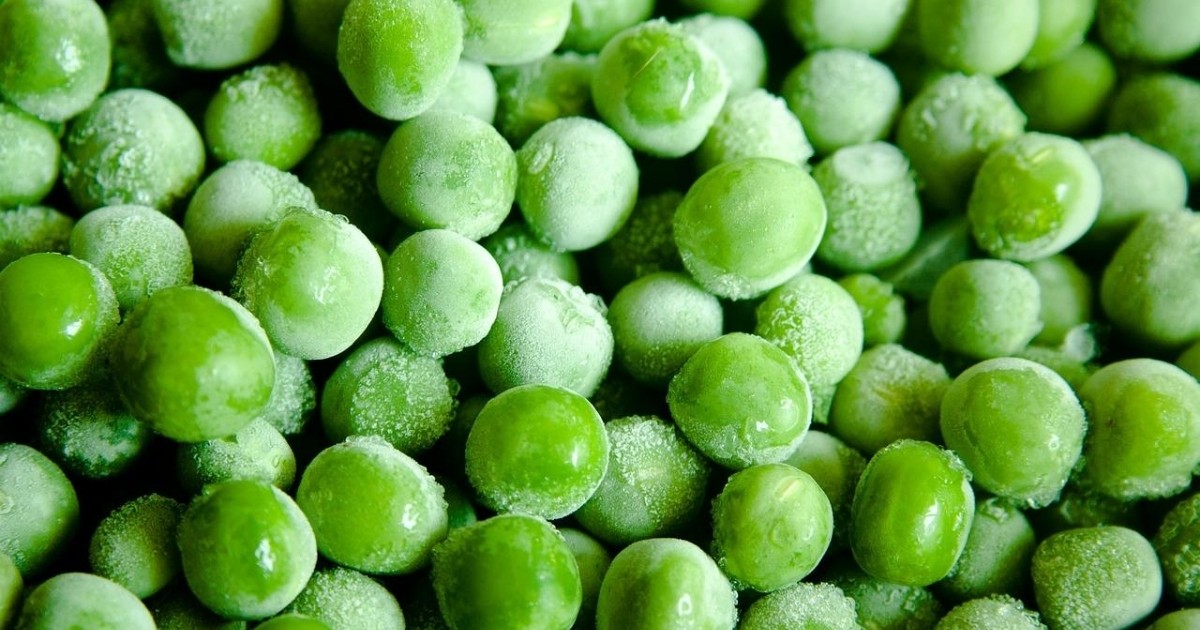
Fact Sheets And Publications

Freezing Vegetables
How to freeze veggies
- Choose vegetables of top quality to freeze. Frozen vegetables are no better than the initial product.
- Wash vegetables in cold running water. If submerged in cold water, lift carefully from water. Drain thoroughly in wire basket. Do not let vegetables stand in water.
- Blanch or scald vegetables.
- Chill in cold running water or ice water.
- Drain and package at once in freezer containers or freezer bags. Leave 1/2 inch headspace.
- Seal securely, label and date.
- Freeze at 0º F. Place packages in single layer until frozen.
- Store at 0ºF. Properly frozen vegetables should retain high quality for 9 to 12 months.
How to blanche veggies
Equipment
- Large kettle or blancher with cover (container should hold at least one gallon of water
- Blanching basket or strainer to fit kettle.
Instructions
- Heat water to boiling - (at least one gallon per pound of prepared vegetable).
- Place prepared vegetable in basket and lower into boiling water. Cover kettle.
- Start to count blanching time immediately. Do not wait for water to return to boiling.
- Remove vegetables from water at end of blanching time. Cool quickly in cold running water or in ice water. Vegetables cool in about the same length of time required for blanching.
Preparation
| Vegetable | Preparation | Blanching time/minutes | Headspace/inches |
Asparagus
|
Wash, sort by size, cut in 2-inch lengths | Small stalks-2 Medium stalks-3 Large stalks-4 | None |
| Beans, snap, green or wax | Wash, remove ends, cut in 1- or 2-inch pieces. | 3 | 1/2 |
| Broccoli | Wash & trim. If insects are present, soak 1/2 hour in solution of 4 teaspoons salt to 1 gallon of cold water. Separate stalks so flowerets are no more than 1-1/2 inches across. | 3 | None |
| Corn on cob | Husk ears, remove silk, wash corn, sort according to size. | Small ears (1-1/4 inches or less in diameter)-7 Medium ears (1-1/4 – 1-1/2 inches in diameter)-9 Large ears (over 1-1/2 inches in diameter) 11 | None |
| Corn, whole kernel or cream style. | Same as on cob. Blanch. Cut kernels from cob. Whole kernel - cut at about center of kernel. Scrape cob with back of knife to remove juice. | 4 (before cutting kernels from cob) | 1/2
|
| Eggplant | Peel, slice in 1/4 to 1/3-inch slices or dice. To prevent darkening, place in solution of 1/4 cup salt to 1 gallon cold water. | 4-1/2 | None -- separate layers of eggplant by sheets of freezer paper. |
| Greens (beet, chard, collards, kale, spinach, turnip, etc.) | Wash thoroughly, remove tough stems and bruised leaves, cut chard leaves in pieces. | Beet greens, kale, chard, mustard & turnip greens-2 Collards-3,Spinach-2, Very tender leaves 1-1/2 | 1/2 |
| Mushrooms | Sort by size, wash thoroughly in cold water, trim stem ends. Slice or quarter mushrooms larger than 1 inch in diameter. | Pan fry until almost done or steam (to prevent darkening, soak 5 minutes in solution of 1 teaspoon lemon juice to a pint of water). Then steam whole (not over 1" across) 5 quarters or buttons 3-1/2 Slices 3 | 1/2 |
| Peas, green | Shell | 1-1/2 | 1/2 |
| Peppers, sweet | Wash, remove stems, cut in half or in slices, remove seeds. | Halves 3 Slices 2 For use in uncooked foods--blanching not necessary | 1/2 for blanched peppers No headspace, if not blanched |
| Summer Squash or Zucchini | Wash, cut in 1/2 inch slices. | 3 | 1/2 |
Prepared by: Sue Snider, Ph.D., Professor/Food and Nutrition Specialist
UD Cooperative Extension
This institution is an equal opportunity provider.
In accordance with Federal law and U.S. Department of Agriculture policy, Cooperative Extension is prohibited from discriminating on the basis of race, color, national origin, sex, age, or disability.
